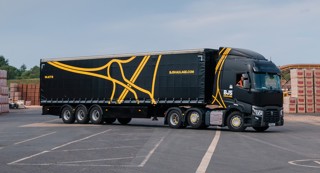By Richard Peak, director at Nextbase
The insurance and maintenance of vehicles and the safety and welfare of drivers constitutes the basis of responsibilities for fleet managers up and down the country, and whether it be a fleet of four or 400, the main problems persist.
Driver safety is, of course, paramount but unfortunately with the amount of time spent on the roads, one in three company cars are involved in an accident annually, with 73,000 business drivers injured each year.
While some of these are unavoidable, 90% of incidents are due to human error.
There are options to help reduce this risk, however, with our research at Nextbase showing that 48% of people believe dash cams can significantly increase road safety.
With insurance premiums and fuel prices rising alongside increasing challenges for drivers, there are more challenges than ever before for fleet managers to consider - I have listed a few below.
Fraud
It may be easy to assume that insurance fraud is firmly in the domain of insurance providers in terms of problems to deal with.
But with 170,000 suspected 'crash for cash' insurance claims in the last 15 months it is likely this will, at some point, fall at the door of a fleet manager.
Protecting drivers from these claims when they are not at fault is important not only to cost saving, but also in helping them get back on the road as quickly as possible.
One of the best ways to do this is through dash cams, which reduce claim times from months to weeks and can often resolve disputed claims when there is no other evidence available.
It is also key to ensure that on the rare occasion a fleer driver is at fault, that any claim is resolved quickly and fairly, which is why tamper-proof dash cams are an important part of any fleet’s security plan.
Money
At the end of the day, the cost and expenditure of the fleet is an issue that will always be high on the list in terms of priorities.
The cost of fuel has risen dramatically over the past two months or so, which has meant that finding savings elsewhere is vitally important.
One such to look at for significant savings is insurance, another cost which has risen significantly in the recent past, but one in which there are significant savings to be made.
Vehicle trackers, alarm systems and, again dash cams, are all proven ways to reduce insurance premiums although it is also important to invest in driver training and not solely rely on technology.
Safety
Driver safety is undeniably the most important aspect of any fleet and its security.
Luckily, by making it of the utmost importance all other considerations will follow, as it ultimately comes down to driver training, safeguarding and proper maintenance of the fleet.
All of which will simultaneously bring down costs, reduce driver downtime and obviously help drivers feel safe and supported, which is key in any work environment.
Fleet managers should also consider investing in new vehicles or equipment in pursuit of this goal.
Newer vehicles tend to have higher safety ratings and as a rule require less expensive maintenance which will in turn help protect drivers from 73,000 injuries a year previously mentioned.
With this in mind, it is interesting to note that dash cam policy holders are, on average, 33% safer drivers - according their telematics score.
Timings
Reducing downtime is part of each of these considerations and could be inserted at the centre of any fleet security plan.
Less downtime means reduced costs and less lost revenue while reducing downtime with proper vehicle maintenance and investment will help keep drivers safe.
One thing that is vitally important within this is communication - communication between drivers and fleet managers and communications between fleet managers and workshops.
All of this is key to ensuring that preventative maintenance can be carried out in good time while also reducing downtime due to accidents and incidents on the road.





















Login to comment
Comments
No comments have been made yet.